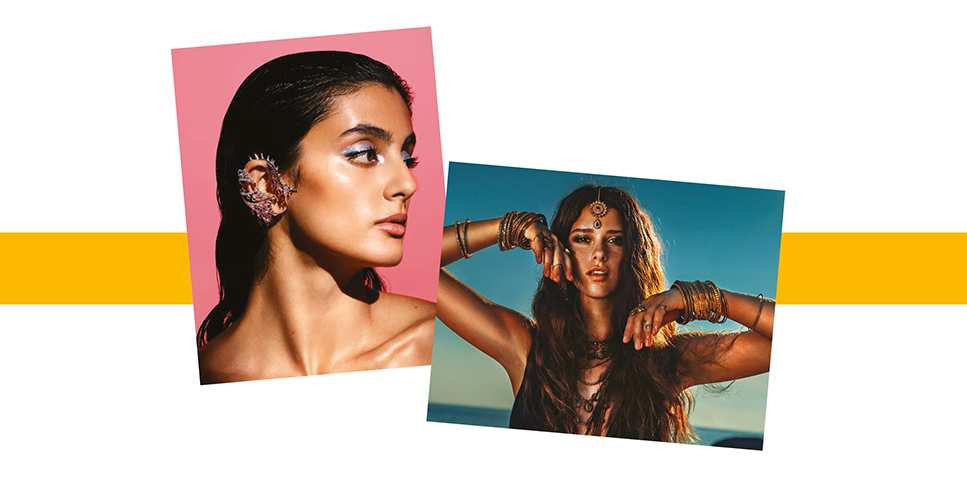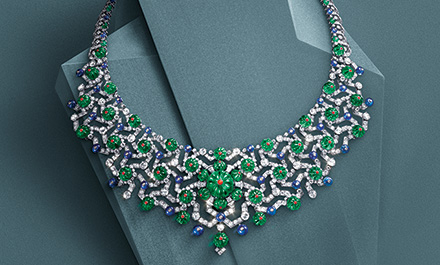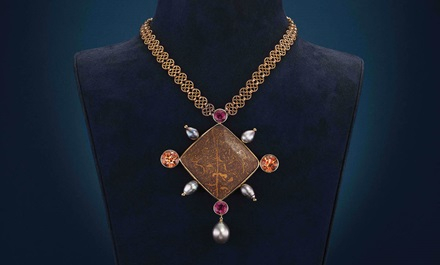Modern concepts and changing social conventions coupled with evolving consumer preferences will influence jewellery design directions this year.
This article first appeared in the JNA January/ February 2023 issue.
Upcoming jewellery collections will likely take cues from a plethora of inspirations that meld past and contemporary trends. According to jewellery industry specialists interviewed by JNA, social media, multi-aspect fluidity, modern interpretations and iterations of new design tenets alongside personalisation and sustainability are the buzzwords in today’s jewellery design circles.
Trends are an evolution of the past and the present, explained Paola de Luca, co-creator of think tank Trendvision Jewellery + Forecasting. With the advent of social media, understanding “open data” has also become essential to identifyingemerging trends.
“Leading companies can observe the world at large. They are translating pieces of what they see into their work,” noted de Luca. “We gain information on what moves us as a society by following online conversations and hashtags. Embracing the present, in all its global and local moods and changes, prepares us for the future.”
The changing concept of fluidity
New York-based jewellery communications consultant for Luxury Brand Group Duvall O'Steen said the concept of gender-fluid designs is gaining steam in the jewellery industry. This type of jewellery tends to feature neutral stones like diamonds, pearls and colourless gems that signify versatility and an on-the-go lifestyle.
Geometric shapes, iconic motifs such as stars or Zodiac signs, and unembellished styles further define the gender-fluid look.
Designer Chris Ploof, for instance, refuses to compartmentalise his buyers as women or men, but simply as people who appreciate his artistry. The US-based jeweller specialises in Damascus steel, mokume-gane – a Japanese metalworking procedure – and meteorite inlay. His rings have amassed a huge following, thanks to their inimitable, versatile designs. Ploof recently launched a glow-in-the-dark collection.
De Luca meanwhile explained that the very concept of fluidity has also evolved throughout the years. Fluidity can now pertain to age, culture, inclusivity and diversity. It can likewise be taken literally through body jewellery, or pieces that “morph” and become one with the wearer, including tribal and indigenous jewellery from Africa or India that are translated into unexpected, futuristic ways
Pearl era
Men wearing jewellery will also continue to be a trend throughout 2023. They however do not just wear jewellery; they wear pearls and proudly. Peggy Grosz, senior vice president of pearl specialist Assael, revealed that a wider variety of men are adorning themselves with pearl jewellery. “We see men of all ages and professions appreciating how pearls are attractive, sustainable and biogenic gifts of nature, not just men who identify with a different sexual orientation,” shared Grosz.
Laura Inghirami, an Italy-based jewellery opinion leader and founder of consultancy DonnaJewel agreed, adding that pearls are headlining various design reinventions by major jewellery houses, which give the lustrous gem a more modern appeal.
O'Steen, for her part, calls it the “pearl revolution.” She further explained, “Pearls have become popular among men, thanks to celebrities such as Harry Styles, ASAP Rocky, and Pharrell Williams.”
Newfound joy
In a post-pandemic world, colourful and artistic jewellery pieces increasingly spark joy in the wearer. Gemmologist Isabella Yan, who also founded Artsmeetsjewellery.com, explained that “kaleidoscopic jewels” have evolved into a meta-palette of electric-neon shades.
“We see this in the use of chrome metals, aluminum and titanium cast in iridescent shades,” noted Yan. “It is a trend that has become ubiquitous and accepted by the general sophisticated consumer.”
Examples of these are Swarovski's Dulcis collection and the vibrant works of jewellers such as Eera, Hugo Kreit, Claire Webb and Austy Lee.
Helen Mao, a jewellery advisor and curator, meanwhile suggested Cindy Chao and Kelly Xie as go-to designers for buyers wanting coloured gem-studded high jewellery.
According to de Luca, mood translates into colour and energy. She said, “People love to wear one bold colour or combinations of colours in clothing, accessories and jewellery. It is an expression of oneself in modern times.”
Stacking and dangling
Tassels, chandelier earrings or fringe designs in diverse styles ranging from ethnic jewels to minimalist pieces will also make a comeback, according to Yan. These are evident in the collections of jewellers Ambersouk, Rainbow K, Sharon Khazzam, Leon Yvonne, Guzema Fine Jewelry and Jade Ruzzo, to name a few.
Stacking and layering is also trendy again, with layered and jumbled pearl necklaces becoming hugely popular. In fact, big, bold bangles and cuffs were seen on many Fall/Winter 2022-2023 fashion runways. The “curated ear” is another form of stacking featuring layered or stacked ear piercings on the lobe.
Personalisation is the driving force behind consumers’ growing need for modern, more expressive jewellery pieces, O'Steen explained. Consumers want to be on-trend while also standing out.
Sustainability 2.0
A new level of sustainability takes jewellery design one step further as it is not just about sourcing but experimenting with unconventional materials, noted de Luca. These include synthetics, organic materials combined with different alloys, and plated or coloured metals. “The design does not need to look organic; the intrinsic value lies in the used materials,” she remarked.
Yan agreed, adding that jewellers will continue redefining the notion of preciousness by using various alternative and non-conformist materials like salvaged wood and natural sea elements.
Reusing and upcycling alongside the use of organic silhouettes and textured gold will be an ongoing theme in jewellery design, she added. Designers like Alighieri, Lenka Kerlicka, Patcharavipa, Polly Wales and Ellis Cameron are among a new breed of jewellers who will continue to promote the sustainability narrative.
Many designers are incorporating unusual materials like wood, ceramic, shell, lucite, glass, horn and patinated copper, among others, into their collections, disclosed O’Steen. These designs are unusual, larger in scope, unique and eye-catching – moving away from traditional styles to a more contemporary feel.
More than aesthetics however, these designs connote accountability and sustainability. “More and more consumers are asking where the gems and metals come from, opting to make eco-conscious choices with their discretionary spending. Recycled metals and traceable gemstones are in the spotlight,” continued O’Steen.
Mao added that lab-grown diamonds and recycled stones could further fuel the sustainability movement alongside vintage and antique jewellery.
Inghirami added there is growing demand for vintage jewellery among younger buyers since it is viewed as a sustainable choice with a rich and diverse story, and high emotional value. Vintage engagement rings, for instance, are rising in popularity among modern couples.













